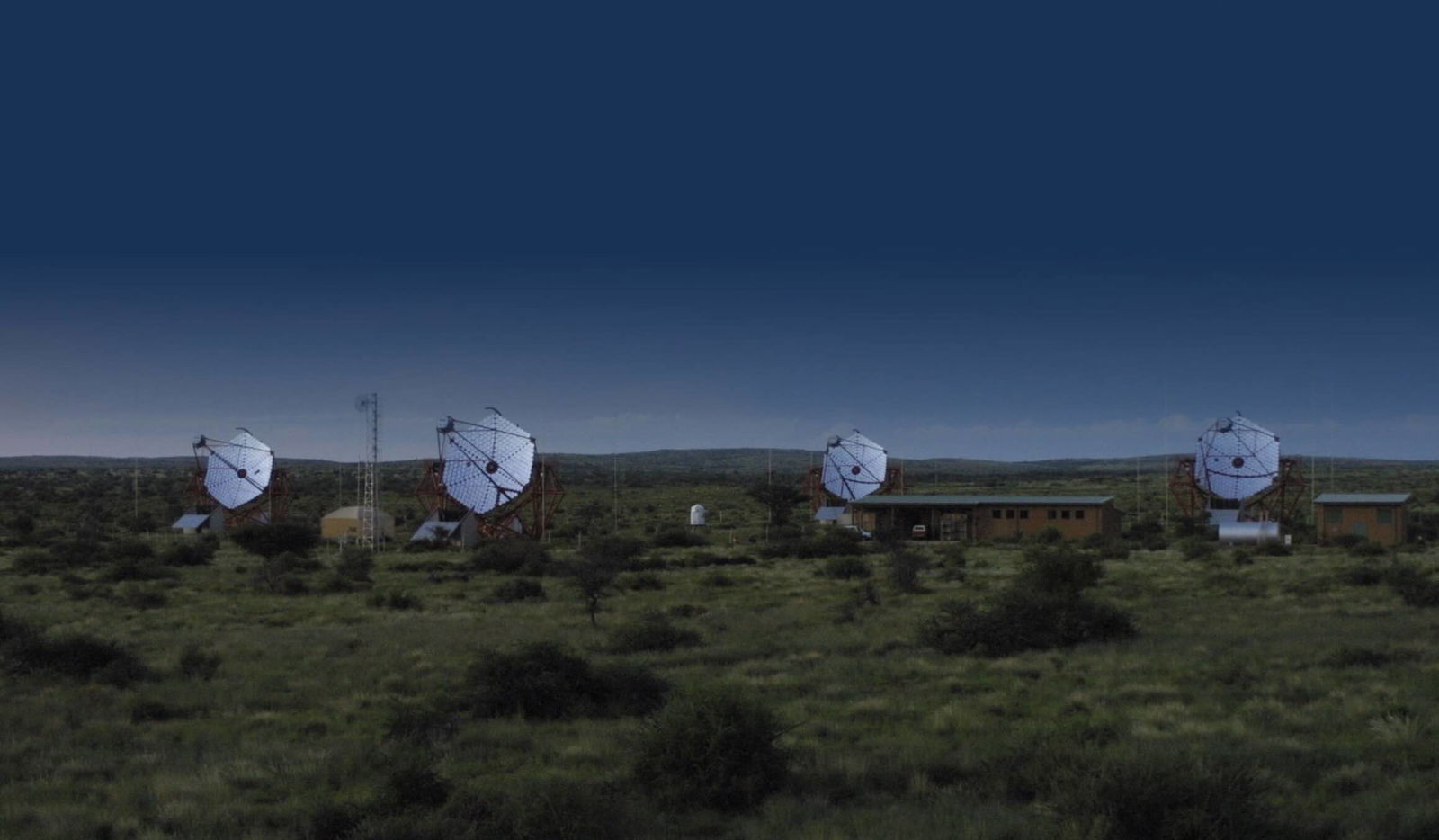New insights into the origins of high-energy cosmic-ray electrons are revealing a more detailed picture of extreme cosmic phenomena and point to a mysterious source located close to our solar system.
Cosmic-ray electrons (CRe) are one of the most elusive varieties of charged particles studied by astrophysicists. Possessing energy that exceeds one teraelectronvolt (TeV), their rarity makes them difficult to study, and many questions remain about their origins.
Unlike gamma rays, which can travel through space without disturbance, cosmic-ray electrons interact with both magnetic fields and light, which robs them of their energy as they travel.
Now, with data collected over the last decade by the High Energy Stereoscopic System (H.E.S.S.) Observatory in Namibia, researchers have finally been able to identify a break in the energy distribution of electrons carried within cosmic rays. The findings point to their mysterious origins within a handful of high-power sources that, intriguingly, appear to be located close to our solar system.
The discovery also provides astronomers with a clearer understanding of nearby cosmic accelerators that helps refine our understanding of the extreme cosmic phenomena underlying the generation of these elusive particles.
A Universe of Extremes
The universe is home to a range of incredibly extreme environments, some of which can produce particles with energies that even exceed those generated by nuclear fusion within stars by a significant margin.
Charged particles like cosmic-ray electrons offer some important clues about the nature of these high-energy cosmic environments. Although gamma rays can travel directly to Earth, cosmic rays become weakened as they interact with magnetic fields, which presents challenges for astrophysicists attempting to discern information about their origins.
Among the problems that arise are the issues involving the detection of high-energy cosmic-ray electrons using space-based instruments, which struggle with limited detection areas. Meanwhile, ground-based observatories face challenges of their own, such as the difficulty that comes with trying to discern between cosmic-ray electrons or positrons, when compared with the abundance of impact-generated cosmic-ray protons and nuclei that shower the Earth as they collide with our planet’s atmosphere.
Even despite these hurdles, the very detection of cosmic rays here on Earth seems to point to the existence of powerful natural particle accelerators which must exist relatively close by.
New H.E.S.S. Observatory Findings
With its array of telescopes, the H.E.S.S. Observatory in Namibia employs a unique strategy toward overcoming these problems: by capturing Cherenkov radiation that is produced when cosmic rays collide with our planet’s atmosphere.
Recently, H.E.S.S. researchers undertaking the largest analysis of its kind leveraged advanced algorithms to help them wade through data the observatory’s four 12-meter telescopes have collected over the last decade. The result of this effort was a unique set of data that offered unprecedented insights into the ever-elusive cosmic-ray electrons, allowing the research team to extend their measurements of these particles to energies as great as 40 TeV.
Additionally, the collaboration’s analysis revealed a rather striking drop-off in the energy distribution of cosmic-ray electrons, an observation that points to their likely origin very close by.
“This is an important result,” according to Kathrin Egberts, a corresponding author from the University of Potsdam, who added that “we can conclude that the measured CRe most likely originate from very few sources in the vicinity of our own solar system.”
A Nearby Source for Cosmic-Ray Electrons
In galactic terms, this positions the source of the high-energy events that produce these mysterious particles remarkably close by. Despite the traditional issues ground-based observatories face, the recent H.E.S.S. findings showcase how researchers using them to employ novel strategies can still discern a surprising amount of meaningful data, which includes deeper insights into these high-energy ranges in the nearby cosmos.
In fact, according to Professor Werner Hofmann with the Max-Planck-Institut für Kernphysik, such insights may not be attainable using space observatories. “The very low fluxes at larger TeV limit the possibilities of space-based missions to compete with this measurement,” Hofmann said in a recent statement.
Going beyond mere insights into the nature and origin of cosmic-ray electrons, the team’s new findings also help to expand our knowledge of nearby cosmic regions and the energetic processes occurring there.
“Our measurement does not only provide data in a crucial and previously unexplored energy range, impacting our understanding of the local neighborhood, but it is also likely to remain a benchmark for the coming years,” said Mathieu de Naurois, a researcher at CNRS.
Ultimately, the recent H.E.S.S team’s results offer astrophysicists important new clues about the processes occurring with nearby cosmic accelerators, in addition to providing a framework for future research into high-energy phenomena occurring in our universe.
The team’s findings were detailed in a recent study titled “High-Statistics Measurement of the Cosmic-Ray Electron Spectrum with H.E.S.S.,” which was published in Physical Review Letters.
Micah Hanks is the Editor-in-Chief and Co-Founder of The Debrief. He can be reached by email at micah@thedebrief.org. Follow his work at micahhanks.com and on X: @MicahHanks.

